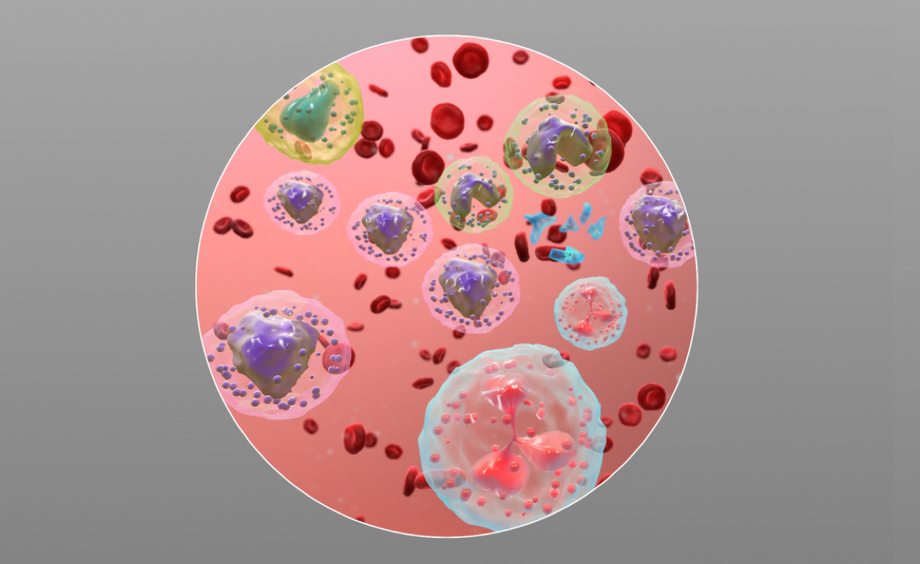Description:
Treatment of leukemia using a synergistic triple combination of arsenic trioxide, iron/iron rich complex such as Hemin and an artemisinin

Background
Leukemia is a cancer of the white blood cells. Types of leukemia include acute myeloid leukemia (AML), acute lymphoblastic leukemia (ALL), chronic myeloid leukemia (CML), chronic lymphocytic leukemia (CLL) and hairy cell leukaemia. In 2015, leukemia was reported as being present in over two million people worldwide and responsible for over 350,000 deaths. It is the most common type of cancer in children, with three quarters of leukemia cases in children being of the ALL type. However, about 90% of all leukemias are diagnosed in adults, with AML and CLL being most common in adults.
The current backbone therapy for acute myeloid leukemia (AML), for example, is the combination of daunorubicin and cytosine arabinoside, which are myelosuppressive and have a significant bystander effect on normal cells. Acute promyelocytic leukemia (APL) is a subtype of AML in which therapy has evolved into one where conventional myelosuppressive therapy is no longer required, at least in the non-high risk subset. Instead, a combination therapy with all-trans retinoic acid (ATRA) and arsenic trioxide (ATO) is used, which together induce differentiation of the malignant cell population along with relatively specific apoptosis of the malignant cell population. As a result, conventional side effects of chemotherapy such as recurrent cytopenia, alopecia and mucositis are not seen. The current anticipated cure rates in APL with this non-myelosuppressive regimen exceeds 90% in most studies. Nonetheless, in some APL patients treatment is confounded by drug resistance, for example, ATO resistance.
Furthermore, in contrast to APL, the majority of patients with AML, particularly in adults, are destined to have disease recurrence after treatment, and this remains the major cause of mortality. Additionally, a substantial proportion of elderly patients with AML and those with significant co-morbidities at diagnosis cannot receive the standard intensive chemotherapy regimens due to their associated toxicity.
There is a pressing need to develop novel therapeutic strategies for treating leukemias (including AML), particularly those which combine high efficacy with specificity for malignant cells with reduced off target side effects. It would also be desirable to develop therapeutic strategies that are suitable for treating forms of leukemia (e.g. AML) that are currently associated with high disease recurrence, which are suitable for treating chemotherapy resistant leukemias, and/or patients for whom conventional intensive chemotherapy regimens are not an option due to additional co-morbidities and/or poor performance status at diagnosis.
Technology Overview
This treatment has findings to suggest that a combination of: (i) arsenic trioxide, (ii) iron/iron rich compounds; and (iii) an artemisinin; can be used to treat leukemia. It has also been found that such a triple combination therapy may give rise to benefits (e.g. synergistic benefits) compared with the effects conferred by the respective compounds alone or in “double” combinations (i.e., a combination of any two of the above active agents).
- Arsenic trioxide is a known chemotherapeutic agent. For example, it has been marketed as the drug Trisenox for the treatment of acute promyelocytic leukemia. Arsenic trioxide can also conveniently be provided as a concentrate for solution for infusion, e.g. for dilution and subsequent intravenous administration.
- Iron/ iron rich compounds such as ‘Hemin’ can be used to increase intracellular iron concentrations. Hemin (Panhematin) is indicated for amelioration of recurrent attacks of acute intermittent porphyria temporally related to the menstrual cycle susceptible women. Similar efficacy has been reported in other patients with acute intermittent porphyria, porphyria variegata, and hereditary coproporphyria. Hemin is formulated for administration at 1-4 mg/kg/day IV infused over 10-15 minutes for 3-14 days based on the schedule.
- Artemisinin and its derivatives (collectively referred to herein as “an artemisinin”) have been widely used as medications in the treatment of malaria. Previous studies have posited that artemisinins (including artesunate) may have anti-cancer properties. For example, pre-clinical studies of the antileukemic activity of artesunate are described in Leukemia Research, 59, 2017, 124-135.
Benefits
Current standard of care therapy for AML and other leukemia’s involves the use of chemotherapy agents that are associated with significant off-target side effects, especially significant myelosuppression. This leads to increase duration of neutropenia post chemotherapy which is associated with an increased risk for infections leading to substantial morbidity and mortality. The increased requirement of supportive care due to these complications including the need for admission into intensive care units as a result of such complications adds substantially to the cost of treating these diseases.
The novel combination proposed here is relatively specific for the leukemia and targets a biological vulnerability of these cells. The specificity of this combination along with the observed efficacy could potentially increase the proportion of patients who could receive this therapy, be associated with significantly less off-target side effects and complications. Due to these beneficial effects it is anticipated that this combination therapy will be significantly more efficacious and cost-effective than the current standard of care.
Applications
The treatment is envisaged to treat human patients with leukemia, which may be acute myeloid leukemia (AML), acute lymphoblastic leukemia (ALL), chronic myeloid leukemia (CML), chronic lymphocytic leukemia (CLL) or hairy cell leukemia. The patient to be treated may be a patient for whom established AML therapies are not viable (e.g. myelosuppressive therapy using, e.g., daunorubicin and/or cytosine arabinoside). For example, the patient to be treated is a patient having an age of 65 or above. Alternatively, the patient to be treated may suffer from a co morbidity that precludes myelosuppressive therapy such as using daunorubicin and/or cytosine arabinoside. Such patients may additionally have refractory AML (e.g. chemotherapy resistant AML) and/or relapsed AML.
Opportunity
We are interested in finding partners to collaborate with and further investment.
Patents
GB priority application was filed on the 17th January 2018 (Application number 1800736.9)
Seeking
- Development partner
- Commercial partner
- Licensing
- Seeking investment
IP Status
- Patent application submitted